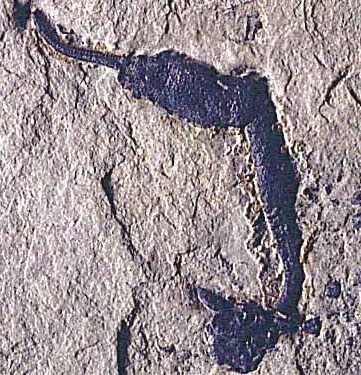UCMP MYSTERY FOSSIL #56 is . . .
the homalozoan Castericystis

Homalozoans may be the strangest looking of all the echinoderms. Their body was flattened, with an arm-like aulacophore at one end. You can see the aulacophore in the photo. Exactly what the aulacophore was used for is not known. Some speculate that it was an arm used for feeding; others think it was a stalk or foot on which the animal stood (much like the stalk of crinoids); and some have suggested that it was a tail used for swimming (much like primitive chordates).
The Homalozoa has only recently been thoroughly studied and examined. The current classification system recognizes two orders: Cornuta and Ankyroida. The Cornuta, like Castericystis, are asymmetrical, unlike most echinoderms.
Fossils of Cornuta are known from the Middle Cambrian to the Late Ordovician; the fossil of Castericystis is from the Middle Cambrian Marjum Formation of Utah.
Learn more about this still misunderstood group of animals here. You can read more about them at www.palaeos.com and www.accessscience.com.